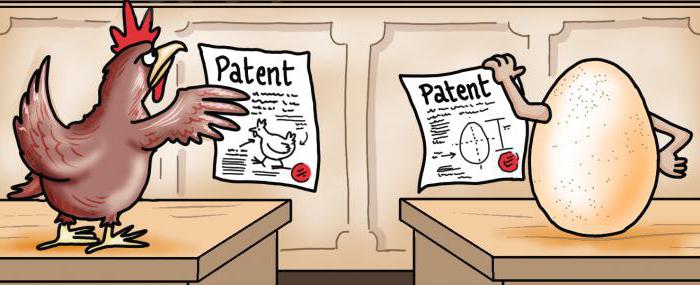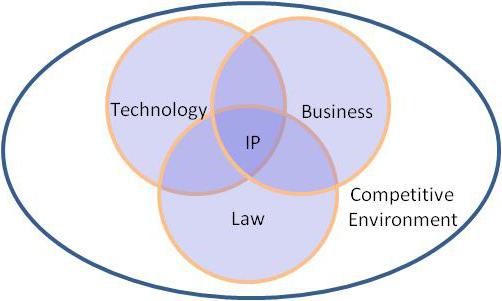An assessment of intellectual property a couple of decades ago seemed complex and unattainable in the context of justifying the desired value from its owner versus an acceptable cost for its business partners.

It is significant that in addition to the mutual consent of interested parties, it was always necessary to obtain “recognition” of the validity and legality of this value from the state, in the person of regulatory and tax authorities, who are far from indifferent to how to extract more budget revenues from this.
Today there are not many estimation methods, but many sources representing surprisingly similar algorithms and estimation methods. Meanwhile, the problem has not become less relevant, and there is no objective understanding of the real value of intelligence and the “products” of its activity.
Current state of affairs
The signing of the Convention in 1967 in Stockholm, which established the World Intellectual Property Organization (WIPO), clearly defined what is related to the term “intellectual property” (IP):
- literary, artistic and scientific works;
- performing activities of artists, sound recordings, radio and television broadcasts;
- inventions in all areas of human activity;
- industrial designs;
- trademarks, service marks, company names and commercial designations;
- other rights related to intellectual activity in the production, scientific, literary and artistic fields.

A uniform declaration in the scientific and practical works of scientists and specialists, on numerous sites on the Internet of the same methods for assessing intellectual property:
- market approach (a method for comparing sales of intellectual property);
- cost approach (replacement cost method, replacement cost method, initial cost method);
- income approach (calculation of royalties, royalty rate exclusion method, DCF methods, direct capitalization methods, express estimation, excess profit method, the method based on the “25% rule”, expert methods).
All this suggests that valuation of intellectual property is far from its subject, as the Decembrists were from the people. However, those who later approached the people did not much succeed in understanding the intellect, its application and evaluation.
It can be assumed that approaches to the valuation of intellectual property may fundamentally differ in essence, depending on the evaluated objective. For example, a literary work and a company name.
But the result of the evaluation will always be a product of the mental activity of a person who, for his embodiment, uses the ideas of other people and objects of the material world (tools, materials, equipment, technologies, etc.).
In view of the foregoing, it is doubtful that the opinion of the Convention and WIPO, as well as the established methods for assessing intellectual property reflect the objective state of things, but it is, and it acts effectively.
Expert Evaluation Method
This is the only adequate designation of a reasonable price formation procedure for an intellectual property in the context of all the positions formulated by WIPO.

Firstly, it is still poorly clear what intelligence is, therefore it is hardly believed that the term “intellectual property” reflects an objective understanding of its essence by public consciousness.
Secondly, if it is not clear what to measure and evaluate, then only an expert can be a measurement and evaluation tool, that is, only a person who uses exactly what he is trying to measure and evaluate to achieve the goal.
Thirdly, all known methods, except for expert ones, try to “fit” the intellect into the classical familiar framework and measure its value as if it were products of heavy engineering, light industry, services, etc.
Fourth, you can’t say anything against the logic of public consciousness - it is always on top. But never before has public consciousness created a single object of intellectual property, but it always provided the right conditions so that an element of public consciousness - a single person - could create something meaningful at the right time, which, no doubt, can be recognized as the result of intellectual labor and intellectual property.
The relevance of the cost estimation task
If a work of art, a picture or an artist’s activity is the basis for the personal income of the author, then the purpose of valuing intellectual property as such is not there. In other words, it is of relatively little importance to society. This is a private business, sometimes available for inheritance.
A trademark, a company name, an industrial design, an invention is extremely important for society, for business, and almost all developed methods for evaluating just such intellectual property are of the most important and practical value.

The development of science and technology, economics, methods of analysis and evaluation is always objective in relation to real things and to intangible things, but directly affecting the material.
Any industrial invention is an intangible idea embodied in reality, always a material result. That is why in this context, the valuation of intellectual property by established methods is practical and effective.
What you need to know about the methods of valuation of intellectual property? A very important point is that the achievements of science and technology, new inventions, industrial designs and other IP objects create the conditions for the birth of new ideas - the case when the intelligence of one person spreads in the minds of other people, giving rise to opportunities for new ideas.
In general, this philosophy has little effect as a logic and an example of assessing intellectual property: in industry and business it does not matter how the idea was born, it is important how much can be extracted from it, therefore, any idea is worth something and it is always realistically appreciated in in monetary terms. There can be no doubt about this, it reflects the whole range of developed methods for assessing IP.
Price of name and title, cost of word
The fact that words have a price, until some time, mankind did not understand, but always used it. Aristotle and Plato are not “Volga”, not “Ford” and not at all “Ferrari”, but all these words are known to everyone and each of these words costs money.
The first two words brought a lot of money to many authors of many books (dissertations, works, studies) many thousands of years after their appearance, and the next three words are so young and so rich in incomes that for some time they themselves bring profit to the owners, and the consequences caused by them, became an occasion and fertile ground for numerous inventions, for the mass of interesting new useful IP objects.

However, how to evaluate the value of a new company name? For example, how much does the name POiNTER or CheCk-i7 cost? Obviously not at all. There is no need to apply a single valuation method to determine the zero value of one or another word. But if a company with that name is created, will last some time and create an effective business, then its name will gain real value and its use will bring quite a certain profit.
In this context The features of the assessment of intellectual property are due to the fact that the birth of an idea is practically free, if you do not take into account that its author had to be raised, educated, taught and fed for a long time.
The author or other interested parties will recall these costs later, in negotiations on the real value of the held idea. It is important that at first nothing costs anything. Only that which has been applied in industry, in production or in recognized by the public consciousness, receives real value, which may change from time to time.
Example: simple word price
Both POiNTER, CheCk-i7, and any other similar name can be associated, and natural intelligence does this automatically. In this case, both of these words are given as an example not by chance, but behind them there is really nothing but historical significance, known only to programmers from the era of the Great Soviet Computers.
The second word is formed from Check-it 2017, the first is given in its original form (except for changing the case of the letter «i») Both transformations are a likely design move in simple words that have no meaning for contemporaries.
Suppose that for each of these words real work has been going on for 30 years. But so far no one has evaluated it as an object of intellectual property, and the proposal to evaluate it will definitely be perceived as a mockery.
It is possible that a company with the same name was already created yesterday or that it will be registered tomorrow such a trademark. But neither the author nor the competitor has been given the opportunity to stop the ongoing process. However, it is possible that similar work is still going on somewhere. Someone is also thinking of something like that. Why all this?
Price The “untwisted” brand name, trademark, popular word, slogan is sometimes very high, but how to define it?
What evaluation method can be applied when it is completely not clear what and what will follow, how the consumer will react and what economic effect can be expected?
The birth of ideas and intellectual property
A person is born twice, at first physically, and then actually, when he finds himself in society, and society considers that there is at least some benefit from a person, that is, he is noticeable in the existing social network of connections.
Each person is able to produce ideas, and to say that his intellectual contribution to business, to the authorized capital of a company or to work is measured in hundreds of thousands of dollars, everyone can. Not everything needs to be trusted.

The very fact that there are just a few methods for assessing intellectual property (market, costs and revenues) indicates that the direction chosen is right. Public consciousness, following its own expert method of assessment, suggested evaluating intelligence:
- as it is;
- How much does it cost;
- how much you can get for it.
Good logic, especially when you consider that in each case you will need to think about how to apply each assessment method.
Intellectual Property Valuation Issues
The problem is not at all that there is nothing to evaluate or not worthy assessment methods. There is one and the other, if we consider ordinary socio-economic relations and do not touch the sphere of intelligence, in which the public consciousness still has neither understanding nor competence.
The problem, for example, is that if at the same time in different places different inventors came up with the same device and made an attempt to obtain a patent or certificate for it, then only one will be recognized by the author - the one who comes before the registrar.

The problem also lies in the fact that if a material object, such as a tractor, can be sold once, then the Windows operating system or 1C program can be sold hundreds of thousands of times. However, the costs for both the tractor and the software product were the same. So why in the second case should each user pay?
In other words, the main problem, first of all, is that the assessment ofIntellectual property does not go beyond the limits of the idea itself, its author, the factor of specific implementation and the specific scope (form) of application.
If we do not consider the moral and ethical aspects (the author and the owner of IP is far from always the same person) and the temporal-spatial moment (the idea was created simultaneously by ten authors at ten different points on the planet), then in reality the assessment of intellectual property is at the level of a real assessment of real things in classic and understandable ways.
Disproportionate earnings problems
So as to An example of an assessment of intellectual property was understandable. Take a mundane and accessible product for everyone: Windows.
At the very beginning, Windows did not shine with abilities and was not considered a decent idea. But technological advances have created excellent computers, excellent computing platforms, graphics devices, etc.
The owner of the idea began to receive significant profits from using his idea, but how many firewood he broke along the road, how many users suffered real damage, and after all, not all of them used unregistered copies. That is, they really paid for a system that caused them real damage.
Not each of these users went to court and not everyone who appealed won the lawsuit.
The field of programming and software has brought a lot to the understanding of what valuation of intellectual property, but at the same time created a lot of new problems.
Every program is a real and tangible manifestation of intelligence, but this is not the basis for “eternal” payments for it. The cost of the program must be reimbursed, but this is not a golden antelope from a well-known fairy tale, but for that matter, then dealing with disproportionate earnings in that fairy tale had a completely objective ending.
Programming or a new method for evaluating IP
In programming, there is a wonderful concept: functionality.
A person is always born in the mode of full functionality, even if we take into account the factors of hereditary diseases or congenital (acquired) physical defects.
Wildlife tends to survive in any way that fits into the natural and objective laws of nature. A program is never functional from the very beginning and can never take care of itself.

It teaches a person to raise and educate a society, starting from parents, schools, friends, institutes, casual acquaintances, work employees. Man develops continuously.
Summing up, I want to say that the concept of intellectual property will develop and become more voluminous, but this takes time.